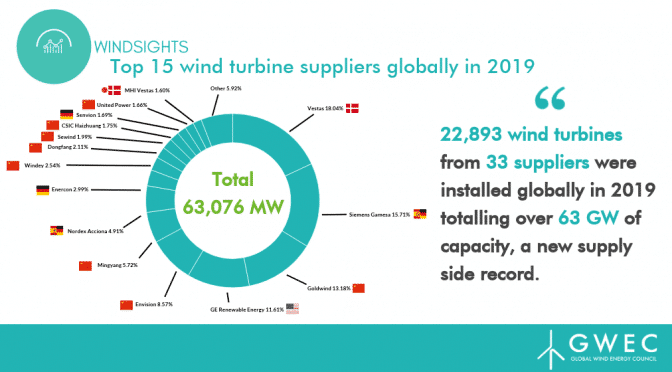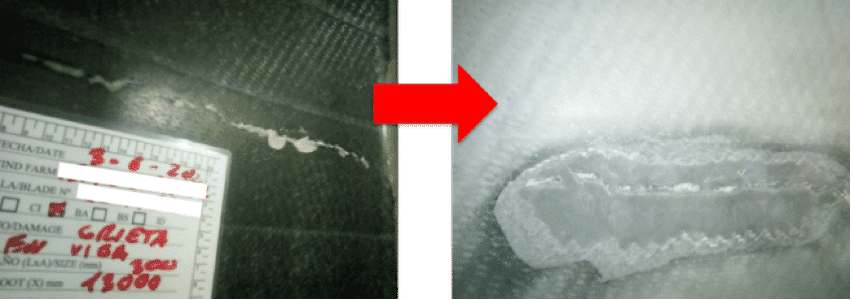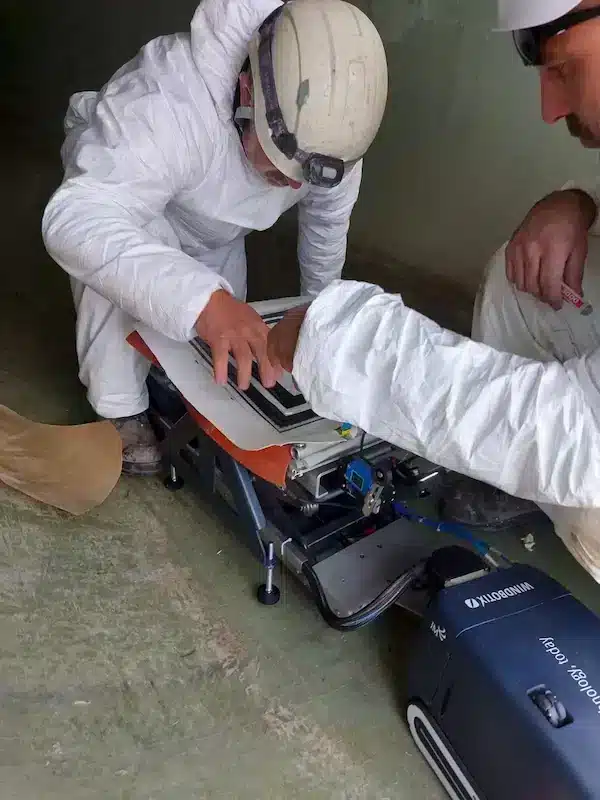The blades of a wind turbine are the largest one-piece composite structures built in the world, even larger than the wings of any aircraft. They undergo more than one billion load cycles during their operative life, thus making periodic inspection and maintenance essential to keep wind turbines in service. Without forgetting the inspection and internal repair of wind turbine blades.
Current internal repair of wind blades have a limited ability to detect structural damage early, which is crucial to avoid extremely costly repairs, or to avoid catastrophic failures, and to be able to repair them in order to extend the life of a blade. With current repair technologies it is possible to clean/sand and repair cracks situated on 1/3 of the blade, made by technicians accessing a confined space and unsanitary environment. It is not possible to repair cracks in the other 2/3 of the blade, and these can spread further and could potentially generate a catastrophic failure. If cracks are detected before a structural failure, the blade would be discarded and replaced.
In addition, the methods and technologies currently available for internal inspection and repair of the blades require long downtimes of the wind turbine, with the consequent economic loss for the operating company. They are jobs with a high cost, and involve exposing operators to work at height, in confined spaces and unsanitary environments.
Faced with this challenge, WINDBOTIX have developed new disruptive technologies and methods for inspection and reparation of internal structural damage to blades, using robots:
• NEMO, a new concept of robots for internal blade inspections, for the early detection of structural defects, with modular configurable payloads.
• CYRUS, a revolutionary robotic solution for internal structural blade damage reparations.
The challenge of performing tasks on blades. Internal repair of wind blades, inspection and maintenance.
The installation of wind turbines in the world has had a high rate in recent years. According to statistics published by WWEA today, the world market for wind turbines reached another record in 2021 with wind turbines with a total capacity of 97,5 Gigawatt installed around the globe, after 92,7 Gigawatt in 2020. The overall capacity of all wind turbines worldwide has now exceeded 840 Gigawatt, enough to provide more than 7% of the global power demand. This equals a growth rate of 13%, compared to 14% one year earlier and 10% in 2019.

With this increasing number of turbines installed, performing inspection and maintenance tasks is becoming increasingly challenging. WINDBOTIX has focused on the specific problem of internal blade inspection and repair. Current techniques and procedures used to inspect and repair blades internally have significant limitations. Our systems have been developed and validated to identify structural damage at an early stage and speed up the process of repairing defects inside the structure in areas not accessible to operators.

Necessity of periodic inspection of wind turbine blades
Wind turbine blades are the largest one-piece composite structures built in the world, even larger than the wings of any aircraft. Wind farms are often placed in remote locations, with wind present all year round. The blades are subject to lightning, hail, rain, moisture and other forces while undergoing more than one billion load cycles during their useful life and it is extremely difficult to lower them to the ground to carry out maintenance and/or inspection tasks.
Periodic inspection and maintenance is essential to keep wind turbines in service, however, current inspection methods do not have the ability to detect structural damage early. It is crucial to identify fatigue damage or small cracks before they are visible to avoid extremely expensive repairs, or to avoid catastrophic failures, and also to be able to extend the life of a blade. Wind turbine blades may have different damage externally, with cracks and/or delamination, that can be detected “easily” with different methods and technologies, see the following figure.

How to inspect and repair internally wind turbine blades
Another different problem are the problems inside the structural beam, because they are can cause critical failures, but they are difficult to detect, due to small dimensions, confined spaces, etc., that causes many times impossible to access New solutions developed by WINDBOTIX are focused on the inspection and repair of internal structural damage, which are currently extremely complicated to detect and repair, see the following figures.


Below you can see real cases of inspection with a NEMO robot inside the beam, detecting structural cracks at different locations, in Z13 m, Z17 m and Z24 m see the following figure.

These types of cracks must be repaired as soon as possible, so as not to compromise the operation of the machine. The usual procedure is by removing layers by sanitizing by roughing/sanding, replacing layers by manual rolling and vacuum compaction and curing of laminate by heating blankets. See example to the following figure.

Several cases of real inspections and repairs have been analyzed, where the use of a repair robot would avoid discarding the blade, in addition to avoiding exposing technicians to harmful environments. With conventional repair technologies it is only possible to clean and repair cracks up to Z15 m (see example of 44 m blade in Figure 8), through the access of an operator working in a confined space and harmful environment.

By not being able to repair the cracks from Z15, they can propagate further and could potentially generate a catastrophic failure and if they are detected before a structural failure the blade would be discarded and changed.
With the methods and technologies currently available, internal repairs of the blades usually require long downtimes of the wind turbine, with the consequent economic grievance for the operating company. They are jobs with a high cost, and involve exposing operators to work at height, in confined spaces.
Use of robotics to change the current scenario
Technologies designed by ANSI and developed by WINDBOTIX are a game-changer in the scenario of internal repairs of wind blades. Our robot NEMO allows to inspect and detect internal cracks and structural damage along the structural beam at an early stage, and our robot CYRUS allows to repair internally blades along their critical areas, avoiding the access of operators to work inside confined space and harmful environment. Using these robotic technologies, we are able to make repetitive and reliable repair methods, capable to work in very small size, milling process, placing patch and curing process under controlled conditions.
Want to know more?







